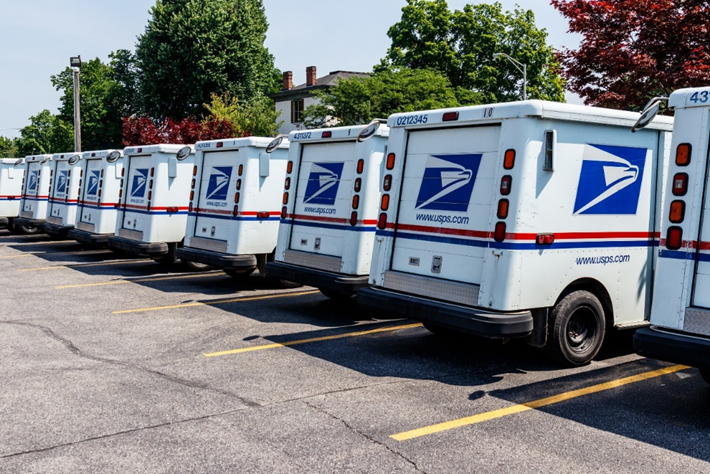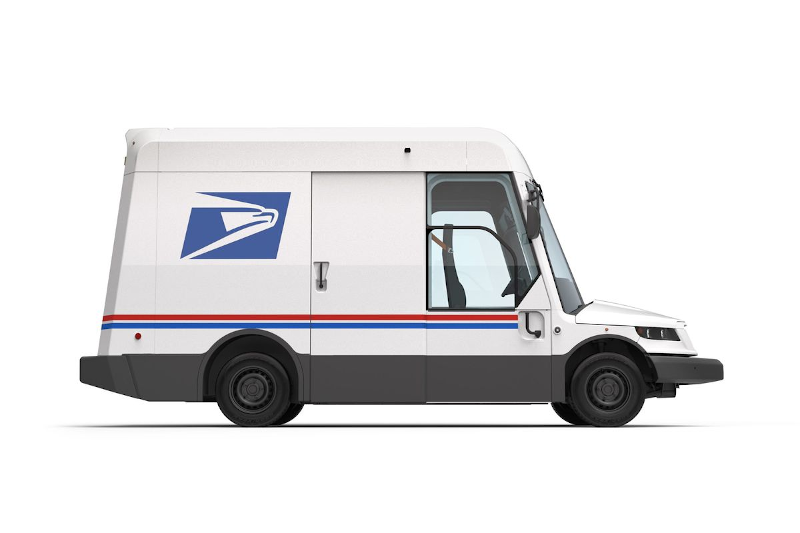
Charles R. Goulding and Peter Favata consider where 3D printing may fit into the latest plan for USPS trucks.
There are more than 230,000 United States Postal Service (USPS) trucks active today, with 190,000 drivers working 6-7 days a week. Many of these trucks have been on the road for 27 years and are approaching retirement, which is normally after 30 years of service.
Recently, the U.S. government has been putting an emphasis on lowering the country’s overall carbon footprint. One way they plan on accomplishing this is by designing and implementing electric and fuel-efficient work vehicles. Workhorse Group, a small company out of Loveland, Ohio with around 150 employees, was rumored to be selected to design and produce new electric mail delivery vehicles for the USPS. However, they recently lost the contract to a much larger company – Oshkosh Corporation. Based out of Oshkosh, Wisconsin the company employs around 16,000 people and in 2019 Oshkosh had $8.4 billion in revenue. Oshkosh is an industrial company that designs and builds specialty trucks, military trucks, truck bodies, and access equipment.

Workhorse still has orders to produce 8,000 trucks, including 1,100 for UPS. They have a goal of producing 1,800 trucks this year. As a comparison, Oshkosh will be designing and producing 50,000-165,000 trucks in the next 10 years. They will be producing two types of vehicles: one completely battery powered and one low-emission gas truck with battery capabilities. As of now the vehicle makeup will be 10% electric and the rest low-emission hybrid trucks.
3D Printing
Additive manufacturing could play a role in the manufacturing and maintenance of these new postal trucks. One important aspect of mail delivery trucks touched on earlier is how long their on-the-road lifespan is, topping out at 30 years. Because of this they require an above average amount of maintenance over the lifetime of the vehicle. 3D printing could be a useful tool for the maintenance of these trucks. Garages could use printers on site for printing vehicle parts in order to quickly get them back on the road.
Oshkosh has worked with Oak Ridge National Laboratory in the past to develop 3D printing technologies. In 2019 the two partnered to develop new 3D printing concrete technology. Together, they were able to develop a method to 3D print concrete structures onsite. A large advantage of this method was it did not require many skilled workers and allowed progress of the structure to continue overnight. ORNL is famous for their “Secret Lab” during World War II, where they played a role in the formation of the Manhattan project.
Projects that involve additive manufacturing or 3D printing technologies are excellent indicator of research and development and can be rewarded with economic tax benefits.
The Research and Development Tax Credit
Whether it’s used for creating and testing prototypes or for final production, 3D printing is a great indicator that R&D Credit eligible activities are taking place. Companies implementing this technology at any point should consider taking advantage of R&D Tax Credits.
Enacted in 1981, the now permanent Federal Research and Development (R&D) Tax Credit allows a credit that typically ranges from 4%-7% of eligible spending for new and improved products and processes. Qualified research must meet the following four criteria:
- Must be technological in nature
- Must be a component of the taxpayer’s business
- Must represent R&D in the experimental sense and generally includes all such costs related to the development or improvement of a product or process
- Must eliminate uncertainty through a process of experimentation that considers one or more alternatives
Eligible costs include US employee wages, cost of supplies consumed in the R&D process, cost of pre-production testing, US contract research expenses, and certain costs associated with developing a patent.
On December 18, 2015, President Obama signed the PATH Act, making the R&D Tax Credit permanent. Beginning in 2016, the R&D credit has been used to offset Alternative Minimum Tax (AMT) for companies with revenue below $50MM and, startup businesses can obtain up to $250,000 per year in payroll tax cash rebates.
Conclusion
The USPS fleet travels 1.28 billion miles a year, averaging about 10 miles per gallon. That is a massive amount of gas used every year by the postal service. Adding electric and low-emission hybrid vehicles to the fleet would greatly decrease the amount of fuel consumed yearly, making the carbon football smaller. Additive manufacturing has an increasing role to play in the manufacturing and repair of these vehicles.
